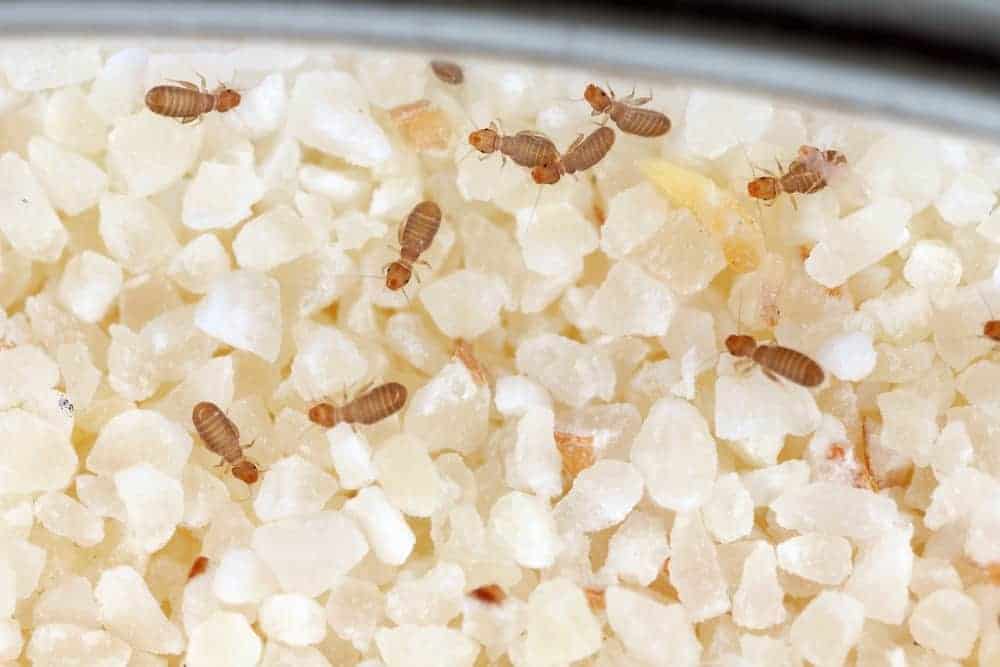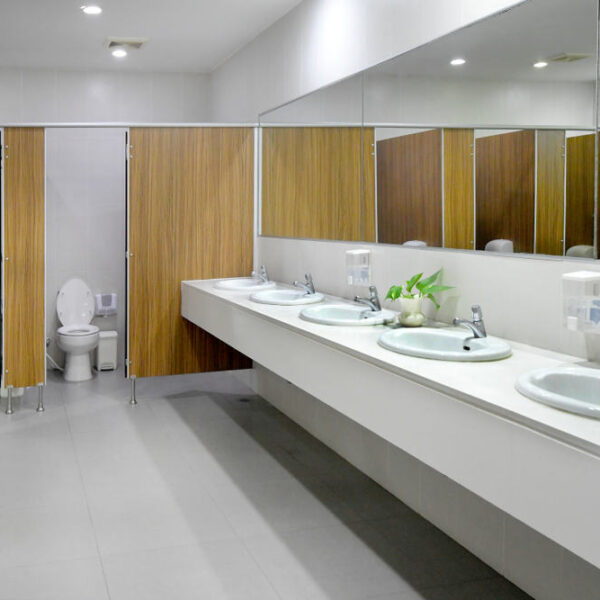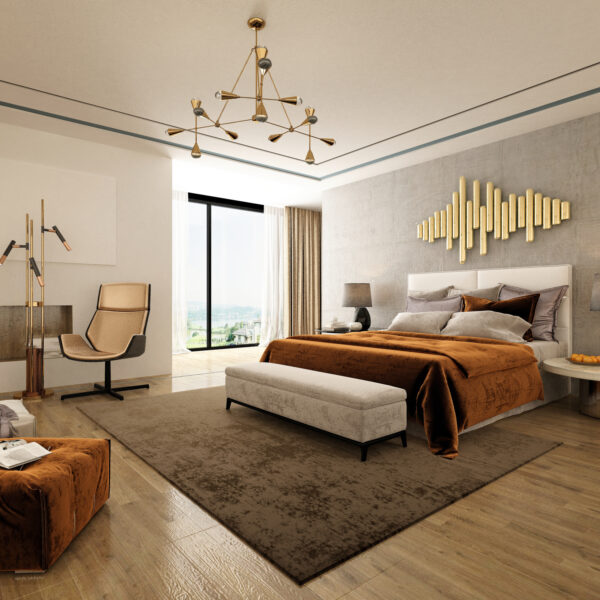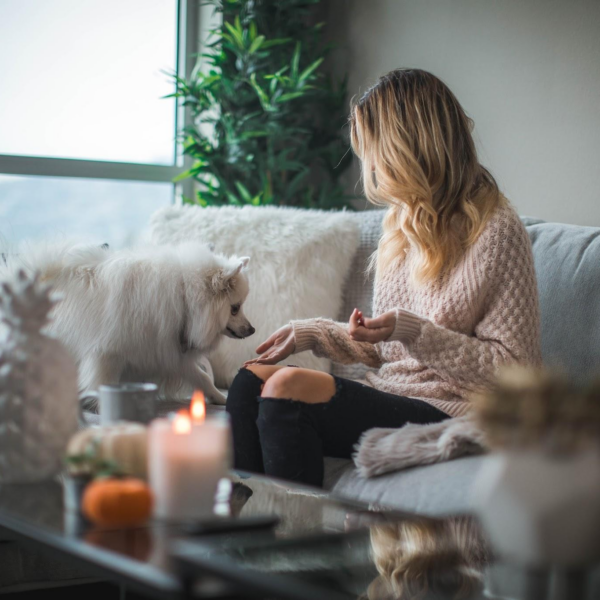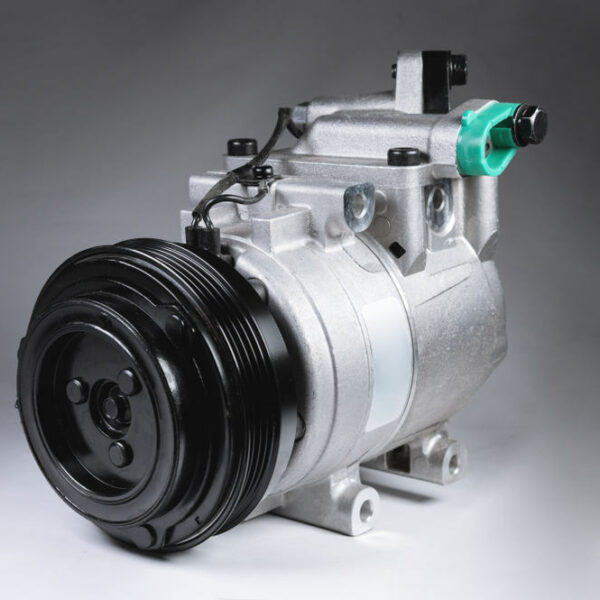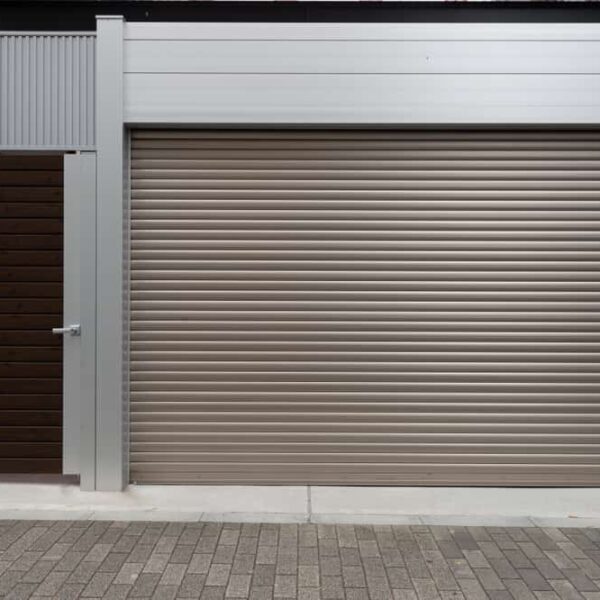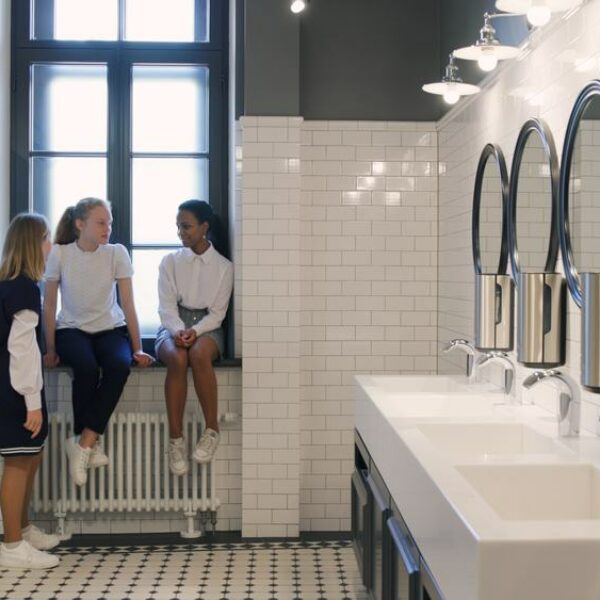Most of us are terrified of head lice because of all the horror stories we’ve heard. So it makes sense we’d be equally scared of psocids. But it turns out head lice got a bad rap and many of our assumptions are false. And while psocid mites look like naked lice, they’re not the same bug. Let’s look at ways to get rid of psocid mites, sometimes called barklice or booklice.
What Are Psocid Mites?
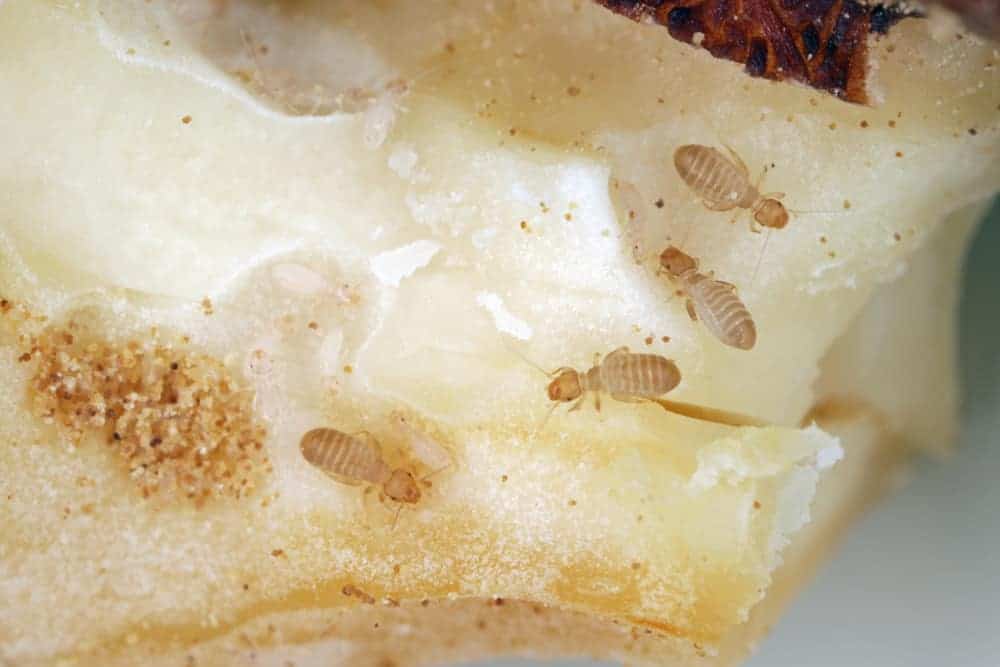
Psocid mites are small insects that look a lot like lice, except their outer shells are see-through. This means when you look at booklice, you can see their internal organs, which is disconcerting in itself. Psocid mites look a bit like tiny termites far away from wood or soil.
Their pale, white, grey, or brown bodies are much smaller though – rarely larger than 1/8th of an inch. They have no wings and their soft, jelly-like bodies don’t have that protective chitin coat. And because they enjoy eating mildew, they’re common in bathrooms and old libraries.
You might also find them in basements, under kitchen sinks, and in other damp spaces. The reason they were nicknamed barklice and booklice is that they’re commonly found in old books and abandoned tree stumps. But they’re just hunting for mold or mildew to eat.
In reality, any wet or dank spot can attract these transparent bugs. Black bathroom mold and mildew are among their favorite meals, but you can also find them eating microscopic fungi. Spores are especially tasty to barklice, so enhanced ventilation is a good control tactic.
This may seem counterintuitive. Won’t improve air circulation just spread said spores around? Well, yes and no. An exhaust fan may pull out the spores and eliminate them. But fans also reduce humidity, which means less mildew, and therefore less food to attract mites.
There are lots of other ways to get rid of psocid mites in bathrooms. The most effective ones involve making the bathroom less appealing to booklice. You can do this by keeping the bathroom as dry as possible and controlling mildew so the barklice has nothing to feed on.
How to Get Rid of Psocid Mites in Bathroom?
Let’s look through some effective ways to get rid of psocid mites in the bathroom.
1. Remove All Mould and Mildew
You might struggle to differentiate mold from mildew. Or you may get confused because most people say (black) mold when they’re referring to mildew. The main difference is that mildew is light, powdery, and highly visible. It’s the stuff you’ll see on tile grout or corners.
It’s often black or grey, hence the name black mold. Regular mold (or green mold) is fuzzy and slimy, the kind you find under that old soap container that has lived under the sink for months. But if you get rid of both mildew and mold, the psocid mites will soon leave too.
Luckily, you already have lots of items at home that can help you minimize mildew and mold. These include vinegar, baking soda, caustic soda, tea tree oil, grapeseed oil, clove oil, borax, and oxygen bleach aka hydrogen peroxide. You can buy these at your local store too.
2. Do a Deep Clean
Interestingly, you can get rid of psocid mites with plain soap and water. So if you’re not in the habit of cleaning the bathroom before or after your bath, try it out. You can use mild dishwashing soap and warm water to wash moldy spots. Try using a poultice or toothbrush.
If it’s an adult bathroom (like your master en-suite), you can sprinkle DE (diatomaceous earth) along the corners and edges where mildew accumulates. Set the bathroom thermostat on low. It’s a small thing, but icy temperatures make booklice slow, sluggish, and dormant.
Curiously, high temperatures can wipe out psocids too, so you could blast the bathroom with spurts of extreme heat or intense cold to kill the mites. Follow up with a vacuum cleaner to collect their corpses and dump them safely – ideally in a spot where you can burn them.
3. Brighten the Bathroom
While psocid mites don’t bite humans, they can cause a mess and spread diseases. Plus it’s upsetting to see those creepy crawlies in the bathroom or feel them on your skin. *shudder*. But just like the mold and mildew that sustains them, booklice prefer dark, gloomy spots.
So if you can increase the natural light levels in your bathroom, you’ll stop their food source from growing and make the bathroom uninhabitable. You want natural light though, so it isn’t about buying high-wattage bulbs and glowing heaters. Think skylights and sun tunnels.
They can be expensive to install, but they’re less dramatic than tearing down bathroom walls and adding new doors and windows (though that’s an option too). You could also replace dark, tinted, or fogged windows with privacy drapes or waterproof blinds to let in more light.
4. Check for Hidden Snacks
As we’ve mentioned, barklice are attracted to rotting wood, old bits of paper, or any organic material that could develop mildew. In the kitchen, this might include forgotten grains and exposed pastries. In the attic or shed, you may spot booklice in ancient books and cardboard.
You could also find psocid mites scrambling behind grandma’s wallpaper, that antique bookshelf, or DIY bathroom products that weren’t infused with emulsifiers or surfactants. These reduce the possibility of mold developing inside products that combine oil and water.
Inspect the bathroom to make sure all your product containers have tight waterproof seals. That way, mold won’t grow in the bottles and attract booklice. Check for labels, paper packets, paint chips, and any old packaging that may be an appealing snack for psocid mites.
5. Soak Up Your Solutions
You can’t stop a bathroom from getting wet – that’s the whole point of having one! But it doesn’t have to be a constant water fest. It’s a cleansing space, not an indoor lake. So take a few key steps to keep the bathroom dry when it’s not in active use. Start with a dehumidifier.
It absorbs any unwanted steam that may accumulate in your washroom. You can also install a ceiling exhaust fan. Both these devices can be pre-set with timers so they’ll automatically run for ten to thirty minutes after every bath or shower, drawing out leftover water vapor.
Fans with timers are expensive though, so you can try manual methods. Place a note near the bathroom door reminding residents to turn on (and off) the fan. Open all windows and doors after every bath to air the room out. You should also wipe down the floor, walls, and surfaces.
6. Get the Right Indoor Plants
Bathroom plants can soak up unwanted moisture. These plants do well in wet, steamy conditions so they won’t get swamped or blistered. They’ll improve the aesthetic and ambient quality of your bathroom as well, and can be quite soothing. And they raise oxygen levels too.
The green energy of these indoor plants is beneficial both practically and psychologically. Use bath-friendly pots though, or you’ll have mud all over your gleaming tiles. Pick plants that work with your local climate conditions. You can use grow lights if the bathroom is dim.
Examples of bathroom plants that can get rid of psocid mites include reed palms, lilies, spider plants, aloe vera, and ferns. You can even buy flowering bathroom plants like azaleas, orchids, and tillandsias. But be sure your thumbs are green enough to maintain these plants!
7. Reinforce Your Bathroom Accessories
You might think towel hooks and floating shelves are trinkets and indulgences. But these items aren’t just pretty storage options. They can help control the moisture levels in your bathroom, which makes them a good way to get rid of psocid mites. Pass by the dollar store.
It’s a convenient shopping spot for quick-and-easy DIY storage options. These include wire baskets and hooks you can attach to your bathroom walls and windows, allowing fresh air to circulate among your linens and toiletries. This prevents damp spots where mold can grow.
Apart from indoor storage, remember to dry your towels, washcloths, curtains, and other bath linens after every use. Even if you’re not washing them, hang them in the sun or on the clotheslines. Damp towels give your bathroom a musty smell and offer ideal hiding spots.
8. Avoid Bathroom Fabrics
Some bathrooms have shelves, cabinets, and baskets to store dirty laundry and clean linens. Others have rugs, curtains, and doyleys. These items can keep your bathroom warm, cozy, and friendly. But they also provide extra surfaces for water droplets to soak in and pile up.
If you must have a drape over your windows or bathtub, consider using synthetic fabrics that repel water better. Wash your shower curtains regularly and avoid keeping any cloth materials permanently in the bathroom. For convenience, install shelves outside the door.
As for bathroom rugs, you could try plastic ones that are easier to dry. Or you could get a moss mat that will help with steam control. Routinely check for any leaks or wet spots that might attract psocid mites. And look out for loose faucets, dripping taps, or unsealed gaps.
9. Use Commercial Products
While natural products may work on black mold and mildew, you may need something artificial to deal with the mites themselves. Pyrid is a good example. Others pesticides include Tri-Die and 565 Plus. Pyrid is an aerosol, so it helps to wear a mask before you spray.
Close all the windows and doors and wear gloves. The formulation has pyrethrins, so it will kill the bugs instantly but won’t harm your kids or pets. Point the nozzle directly at the psocid mites in your bathroom. Leave the bathroom shut about half an hour for saturation.
Later, you can run the fan or open the windows to let fresh air into the bathroom. Otherwise, the insecticide fumes may feel cloying or trigger sniffles. And remember, while Pyrid is non-toxic, you don’t want kids or furbabies touching those wet sprayed surfaces up to four hours.
10. Use a Hoover
Yes, strange as it sounds, a vacuum cleaner is an effective way to get rid of psocid mites in the bathroom. Think of it as a form of spot treatment. Using the right vacuum attachment, point your hoover at any moldy spots. The suction will pull off loose spores and booklice.
These bugs are one or two millimeters at most, so you may not spot them unless they’re wiggling on a white background. But if you do see them moving around, you can suck them up and dump them in a safer spot. Then disinfect the vacuum to avoid cross-contamination.
Vacuum cleaners are useful for scooping barklice out of books and drapes as well. Hopefully, you don’t have too many of these in the bathroom, but you can still point the vacuum hose at that moldy corner or a mildewy curb where one or two psocid mites are probably bingeing.
11. Dry the Bathroom Out
We’ve spoken about indirect techniques of keeping the bathroom dry and steam-free. These include dehumidifiers, skylights, and windows to warm up the space, or manually mopping the bathroom as often as possible. But you can try some unexpected tactics to help you along.
For example, running the AC on high can help get rid of any excess moisture in the air. You could also bring a portable heater or a fan into the bathroom and run it for half an hour or so. This will immediately lower your bathroom humidity levels and repel the psocid mites.
But never leave these mobile heaters or fans unattended because they can easily become an electrical hazard. You can also limit bathroom moisture by keeping the toilet (and cistern) covered and using the sink for shorter periods. This conserves water and minimizes waste.
Barklice are Never Nice!
Nobody wants to deal with booklice in the tub or shower. So what are the best ways to get rid of psocid mites in the bathroom?
- Use an exhaust fan and/or dehumidifier to expel excess bathroom steam.
- Clean off any black mold or mildew to cut off their food supply.
- Keep bathroom beauty products tightly sealed to avoid developing mold.
- Dry your towels and bath linens completely to reduce that damp smell.
- Try DE, talcum powder, enzymes cleaners, or silica aerogel.
Do you know other ways to get rid of psocid mites in the bathroom? Tell us in the comments!
